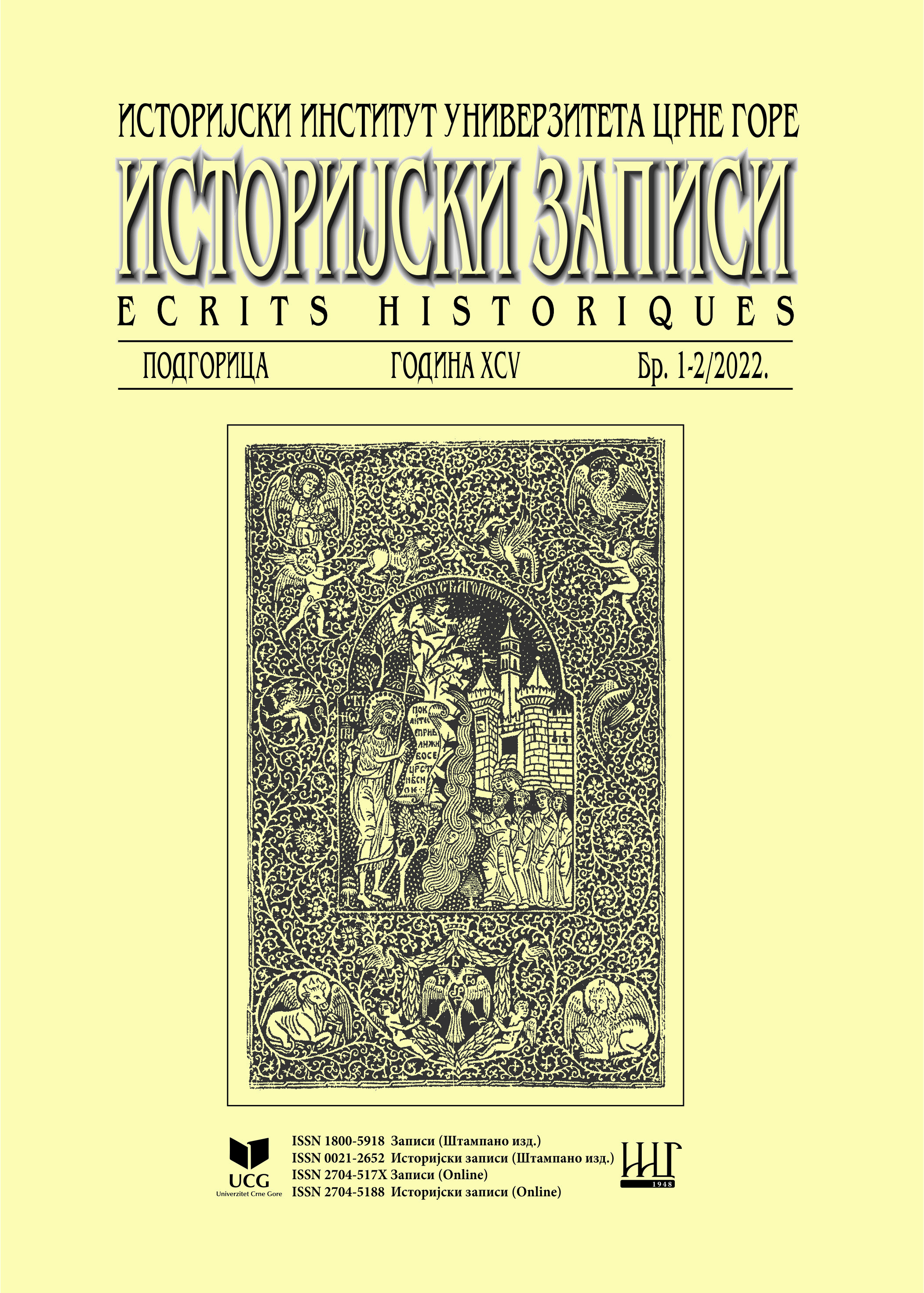KULTURNA BAŠTINA, SIMBOL KOLEKTIVNOG SJEĆANJA NA TRINAESTOJULSKI USTANAK
Cultural heritage, a Symbol of the Collective Memory of the 13th July Uprising
Author(s): Dobrila VlahovićSubject(s): Cultural history, WW II and following years (1940 - 1949), Post-War period (1950 - 1989)
Published by: Историјски институт Црне Горe
Summary/Abstract: In her work, the author wants to draw attention to the importance of protecting and preserving the material heritage of antifascism by presenting a valuable segment of the Montenegrin memorial cultural heritage with a focus on the heritage dedicated to the Thirteenth of July Uprising. This is an important issue, especially today, when in some countries, unlike in Montenegro, there is an increasing re-examination of the narratives of the past, but also the revision of memories.The July 13 uprising in Montenegro has a special significance in its history, which is why its citizens inherit a cult of collective memory according to that event and the period of the National Liberation War. In Montenegrin society, there is no review of the memory of the NLW period, on the contrary, a positive social attitude is expressed, which, among other things, is indicated by numerous monuments and memorials, built to re- mind of that period. Monuments to the fighters killed during the National Liberation War were the first symbols of the cult of revolution in Montene- grin post-war society, but also places of historical memories and commemorative practices. Due to their historical significance, most of them have been placed under state protection, have the status of cultural property and represent a significant segment of Montenegrin cultural heritage. There- fore, the paper will discuss this type of cultural heritage, insufficiently valorised and presented, its legal status, condition, and also its role and significance for society.
Journal: Историјски записи
- Issue Year: 2022
- Issue No: 1-2
- Page Range: 387-394
- Page Count: 8
- Language: Slavic (Other)

